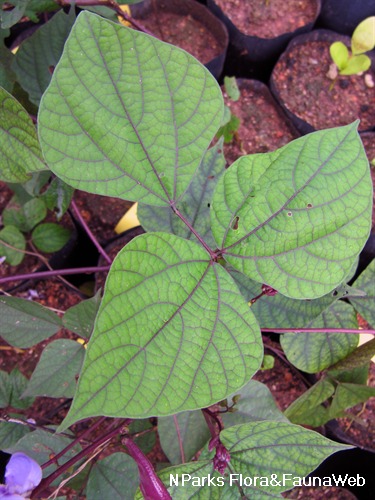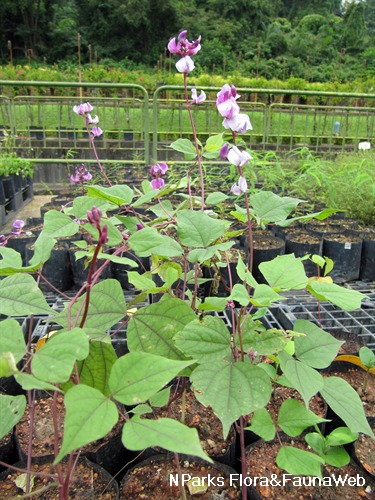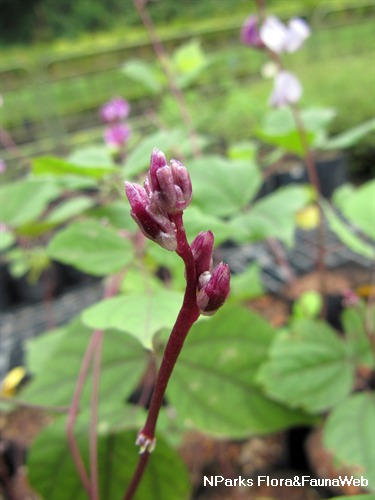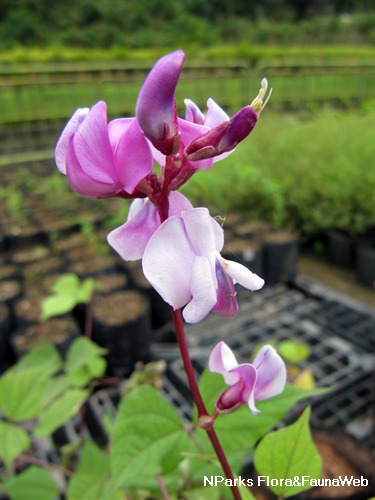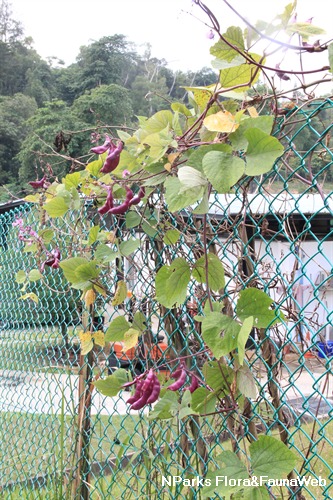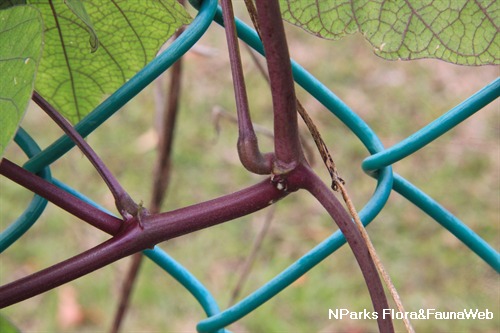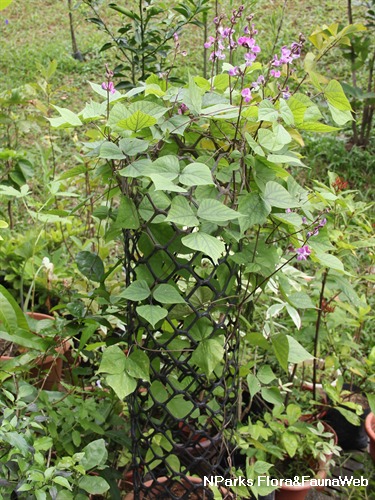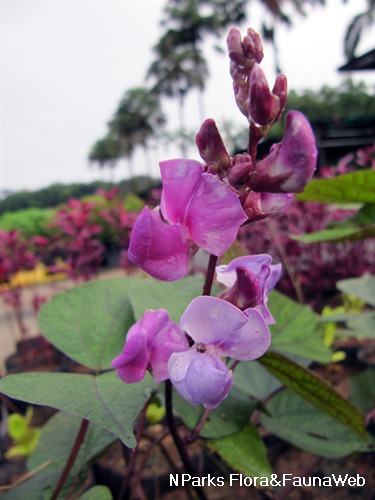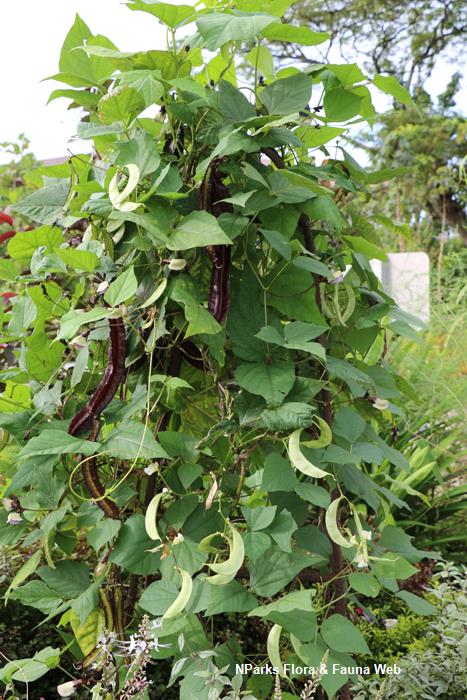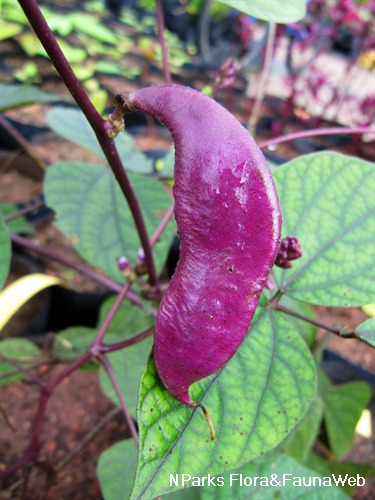
Back
Lablab purpureus
| Family Name: | Fabaceae (Leguminosae) |
| Synonyms: | Dolichos lablab, Dolichos purpureus |
| Common Name: | Hyacinth bean, Lablab bean, Poor man's bean, 扁豆 |
Name
Classifications and Characteristics
| Plant Division | Angiosperms (Flowering Seed Plants) (Dicotyledon) |
|---|---|
| Plant Growth Form | Climber |
| Lifespan (in Singapore) | Annual |
| Mode of Nutrition | Autotrophic |
Biogeography
| Native Distribution | Africa, Western Indian Ocean (Madagascar) |
|---|---|
| Native Habitat | Terrestrial |
| Preferred Climate Zone | Tropical |
Description and Ethnobotany
| Growth Form | Vigorously trailing, twining herbaceous plant. |
|---|---|
| Stems | Robust, hairy, trailing to upright to 3-6m in length, usually purplish. |
| Fruit | Oblong-falcate, straight or slightly curved, flattened. Cultivars grown for vegetable have pods with thick, fleshy skins with practically no fiber. Pods maybe septate or non-septate |
| Cultivation | It is traditionally grown as pulse crop for human consumption. It is also used as a fodder legume sown for grazing and conservation in broad-acre agricultural systems in tropical environment. As a dual purpose legume, it is sown as a monoculture or inter-crop systems. |
| Ethnobotanical Uses | Edible Plant Parts : Edible Fruits, Edible Flowers, Edible Seeds Food (Fruit or Vegetable): Flowers and immature fruits (pods) are eaten as vegetable. Medicinal: The Chinese use the dried flower to treat dysentery with bloody stools, inflammation of the uterus and to increase the menstrual flow. The seeds are used to help digestion; to treat colic, cholera, diarrhoea, rheumatism and sunstroke; as a sedative and febrifuge; and as an antidote against fish and vegetable poisoning. Chemical compounds: Hydrocyanic acid, phytin, pantothenic acid. |
Landscaping Features
| Landscape Uses | Small Gardens |
|---|
Fauna, Pollination and Dispersal
| Pollination Method(s) | Abiotic (Self-Pollinated) |
|---|
Plant Care and Propagation
| Light Preference | Full Sun |
|---|---|
| Water Preference | Moderate Water |
| Plant Growth Rate | Fast |
| Rootzone Tolerance | Well-Drained Soils, Heavy Clay Soils |
| Soil pH Range From | 4.5 |
| Soil pH Range To | 7.5 |
| Planting Remarks | Tolerant of high temperature but grows best at average daily temperatures of 18-30°C. |
| Maintenance Requirements | Moderate |
| Fertilizing | It can grow well without fertilizer, growing in sandy soils often require applications phosphorus and sulphur and application of line in very acid soils. |
| Diseases | Anthracnose, leaf spot and powdery mildew. |
| Pest(s) | Nematodes |
| Propagation Method | Seed |
Foliar
| Mature Foliage Colour(s) | Green |
|---|---|
| Mature Foliage Texture(s) | Smooth, Hairy / Hirsute |
| Foliar Type | Compound (Trifoliate) |
| Foliar Arrangement Along Stem | Alternate |
| Foliar Attachment to Stem | Petiolate |
| Foliar Shape(s) | Non-Palm Foliage (Ovate) |
Floral (Angiosperm)
| Flower & Plant Sexuality | Bisexual Flowers |
| Flower Colour(s) | Pink, Purple, White |
|---|---|
| Flower Grouping | Cluster / Inflorescence |
| Inflorescence Type | Raceme |
| Flowering Opening Time | Daytime |
| Flowering Period Remarks | Flowers open generally 2days after anther dehiscence. |
Fruit, Seed and Spore
| Mature Fruit Colour(s) | Green, Purple |
|---|---|
| Mature Fruit Texture(s) | Smooth, Papery |
| Mature Seed Colour(s) | Black, Brown, Cream / Off-White, Red, White |
| Mature Seed Texture(s) | Smooth |
| Seed Description | Approximately 10mm in length. |
| Seed Quantity Per Fruit | Moderate (6-10) |
| Plant Sexuality (non-Angiosperm) | Dioecious |
Image Repository
Others
| Master ID | 31156 |
|---|---|
| Species ID | 5550 |
| Flora Disclaimer | The information in this website has been compiled from reliable sources, such as reference works on medicinal plants. It is not a substitute for medical advice or treatment and NParks does not purport to provide any medical advice. Readers should always consult his/her physician before using or consuming a plant for medicinal purposes. |

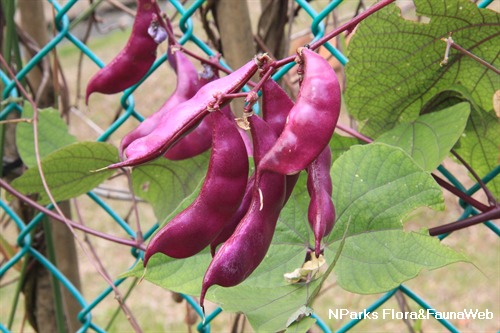
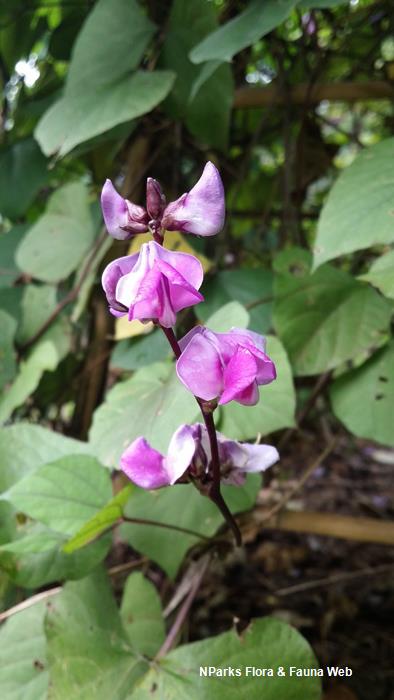
.jpg)
